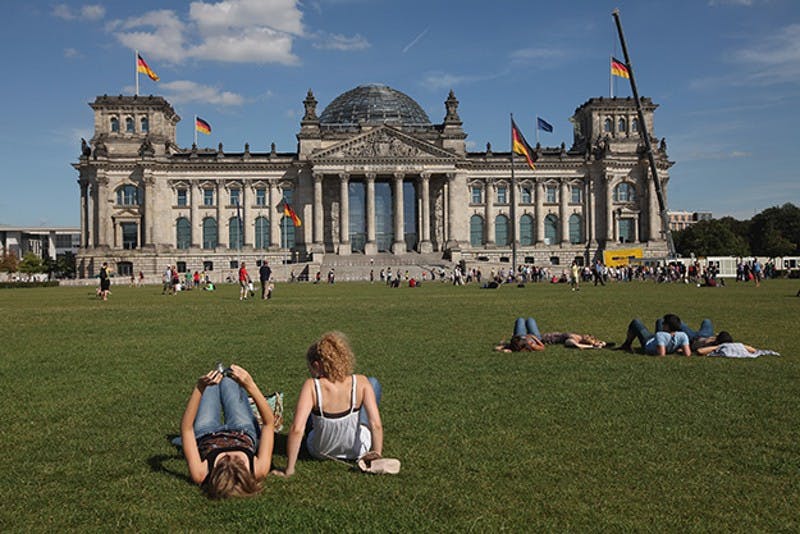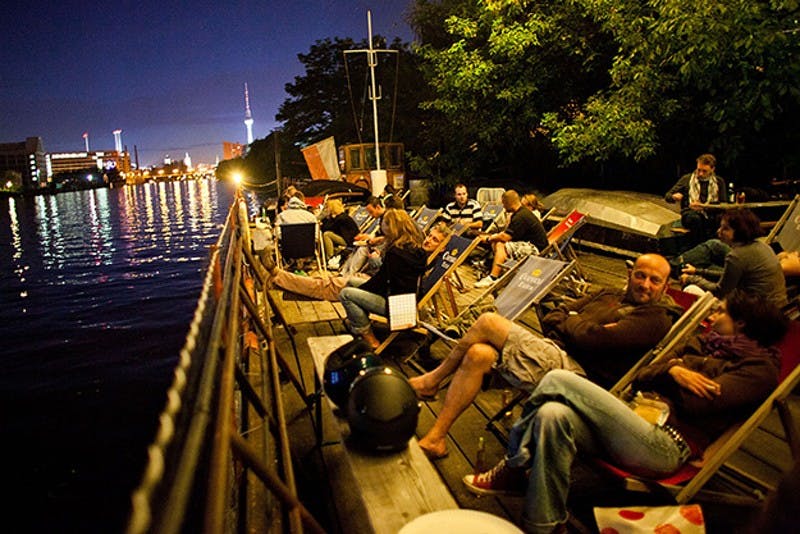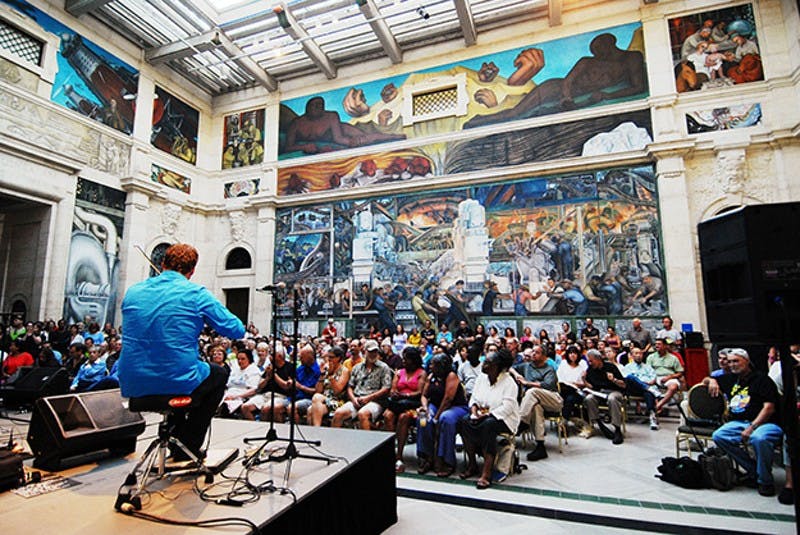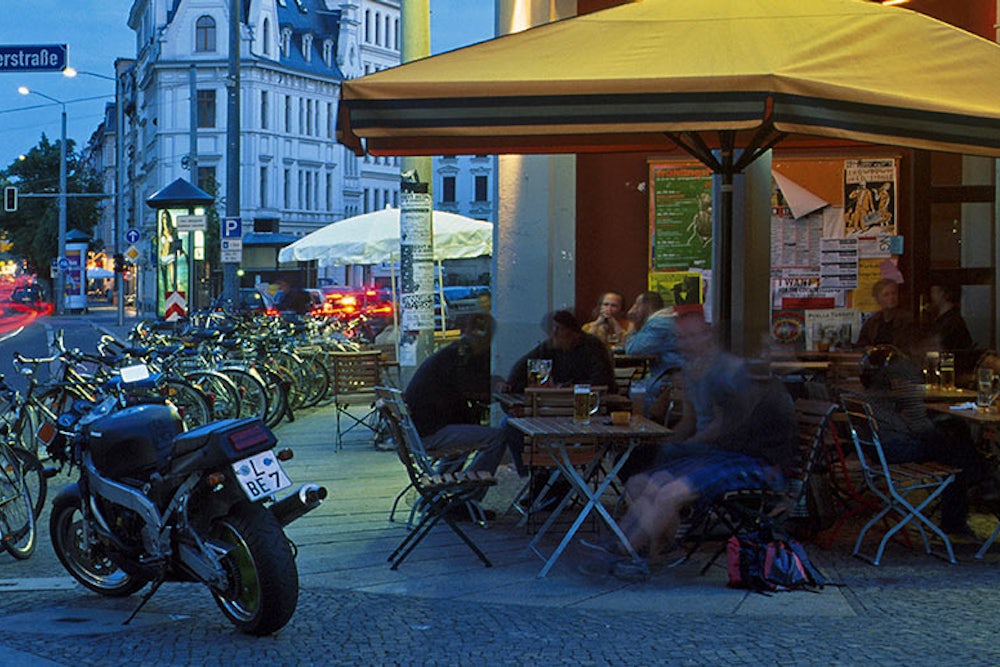When Andre Herrmann first moved to Leipzig in 2007, the post-industrial East German city wasn’t exactly known for its glamour. Since the Berlin Wall had fallen, the city had mostly been in dire economic straits, with many empty buildings left to rot. “The GDR had let many of the late-nineteenth century buildings fall apart, because it didn’t like them,” says Herrmann, a writer who often blogs about Leipzig. Although the city attracted its share of students and young creative types, Leipzig was mostly known for its poverty and desolation.
But in recent years, Leipzig has become one of the most hyped “cool” cities in Europe. It began when the New York Times listed Leipzig as one of its “places to go” in 2010, touting its music scene and burgeoning artist community. German media enthusiastically followed suit: SPIEGEL, Germany’s foremost news magazine, called it “Berlin, but better” in an article about the city’s nightlife. Just this past week, the New York Times used the German capital as a measuring stick once again, publishing a paean to the city with the headline “New Berlin or Not, Leipzig has a new Life.”

Lately, “new Berlin” has become shorthand for an under-visited European city that is cheap, fun, and up-and-coming. Ever since creeping gentrification and a massive rise in tourism have thrown into question the German capital’s status of the world’s “coolest” city, people have been racing to determine its successor. Candidates besides Leipzig include Krakow (Poland), Vilnius (Lithuania), Belgrade (Serbia), Tallinn (Estonia), and Warsaw (Poland). They share, to varying degrees, many of the elements that made Berlin famous in the 1990s: affordability, empty buildings that can be repurposed and a sizeable arts scene. But unlike Berlin, they won’t have the opportunity to develop their cool reputation slowly—and are just as likely to be ruined by the hype as they are enriched by it.
It goes without saying that Berlin will, of course, always be the only Berlin. Its combination of livability, anti-authoritarianism, and sophistication stems from its winding, often traumatic path through European history. The city has been cool, to varying degrees, for a very long time. During the Weimar era, it became famous for its hedonistic parties and sexual openness, and during the 1970s, David Bowie cemented the city’s avant-garde image. After the fall of the Wall, its techno scene—which took root in abandoned factories and department stores—helped turn it into Europe’s nightlife capital.

But in the past decade, the city’s hipness has become less organic and more aggressively manufactured. Klaus Wowereit, the city’s mayor since 2001, coined a slogan, “arm aber sexy” (“poor but sexy”), that became the city’s calling card, and funded a number of ad campaigns to market the city, including its outlying neighborhoods, to globetrotting party kids. In 2004, he told an interviewer that he wanted to make tourism a “priority at the top-level,” and in the years since, the number of tourists visiting Berlin has risen dramatically from 13 million overnight stays in 2004 to a record 27 million in 2013. In the process, the city has become so overexposed that local officials have begun mulling a “code of conduct” for visitors and the German press engaged in a months-long debate this spring about whether or not the city is actually “over.”
This way of talking about cities—“up-and-coming,” “cool,” “over”—is partially the result of a rash of neo-liberal reforms that have had a deleterious effect on the way we think about cities over the past two decades. “From the 1980s onwards, national governments pulled investments from cities, and they’ve been needing to compete for investment, jobs, and media attention,” says Jamie Peck, a professor of geography at the University of British Columbia. This means that cities—spurred on by globalization and Richard Florida’s highly contested claim that the key to urban regeneration is to attract a “creative class”—are now engaged in an aggressive war for buzz and attention.
Berlin isn’t the only city trying to sell itself as “poor but sexy.” In the past several years, cities ranging from Detroit to Durham have been hoping to rebrand themselves as “creative hubs,” whether or not that label has any bearing on reality. “We’ve got a lot of mounting evidence that these strategies aren’t really effective,” says Peck, “but a lot of these cities don’t have the capacity to do bolder things, so they compete in this symbolic economy.” Houston, for example, recently launched an ad campaign aimed at creative people with the slogan “the city with no limits.”
And the press is only too happy to play along. Because of the Internet, the travel media faces growing pressure to “anoint” the next great destination or emerging city, even if there’s not much to announce. This means that writers or editors at publications often have to cobble together disparate small novelties—a few new cafes, a popular band, and a new theater—to craft a broader narrative about a city’s “creative” renaissance, and then package a city as the new version of another city that has grown passé. Over the past decade, Montreal, Portland and Detroit have all been the “new Seattle,” Austin has been the “new Portland,” and Minneapolis has been the “new Austin.” Even Berlin has been hyped as the “next Silicon Valley.”
Take, for example, the most recent New York Times article about Leipzig. It opens by describing the rash of recent trend pieces about the city, then chronicles the city’s rise from poverty to “poverty chic,” focusing on Leipzig’s cheap rents and spotlighting its burgeoning arts scene. “A Berlin-esque club and techno scene has also taken root,” it explains, without going into detail. And although the piece shies away from calling the city the “new Berlin,” its between-the-lines message is precisely that. “We aren’t Berlin, we are Leipzig,” says the city’s mayor, through what the Times calls “a permanently affixed smile.”

This kind of coverage plays a large role not only in fostering what Peck calls the “ranking industry” that pits cities against each other but helps attract real estate speculators and a category of pioneering tourists known as the post-tourism tourist, or the “new tourist.” Unlike the tourists of yore, “new tourists” don’t travel with the goal of sightseeing for a few days, but of spending a longer period of time casually enjoying the lifestyle of a cheap, hip city. Because the post-tourists aren’t as interested in attractions like museums or monuments, preferring to hang out in parks and cool bars, they are particularly attuned to a city’s reputation.
Johannes Novy, an urbanist who has studied the effect of tourism on Berlin, ties the popularity of “new tourism” to today’s “higher mobility—meaning that people are traveling more—and the blurred boundaries between leisure and work.” IDC, a market intelligence firm, predicted a 30 percent rise in the number of mobile workers between 2010 and 2015. And if you work from your laptop in Milwaukee, for example, what’s to stop you from spending a few months working on your laptop from Leipzig? “Many of the tourists you see in Neukoelln,” Novy says, referring to the rapidly gentrifying neighborhood in the southeast of Berlin, “don’t fit the transitional image of tourists you have in Rome or Paris.”
Because these kinds of visitors occupy a gray zone between traditional tourists and locals, they can also, for better or worse, deeply affect the culture of a city. They can add a sense of diversity and vitality to a neighborhood, but because they often come from cities more affluent than Berlin, landlords or Airbnb users are able to overcharge them, driving up the price of the rent (and it doesn’t help their popularity that they like to party and rarely speak German). For Berlin, a historically poor city, this can have a disproportionate effect on the city, “because in Berlin, other industries like finance aren’t so present,” Novy says.
And it is precisely this crowd that is increasingly likely to descend on Eastern Europe’s up-and-coming cities in the next several years. “One of the themes of this tourism is the pioneer element,” says Novy, “the discovery of the new, trending thing.” The more “over” Berlin is considered in the press, the more likely they are to move further east—a development that many people in Berlin aren’t exactly sad about. Novy believes that the places most likely to be affected in the next few years include Leipzig, Krakow, and Warsaw.
But the greatest risks posed to the “next Berlin” are likely to stem from an international real estate market that has grown dramatically since the 1990s. As James Surowiecki detailed in a recent New Yorker, liberalized purchasing rules have allowed “a torrent of capital from wealthy people in emerging markets” to flow into various cities around the world over the past few years, with a special focus on “hotspots” like Berlin. This means much of formerly affordable, trendy neighborhoods like Neukoelln has been snapped up by faraway buyers in Ireland, Norway, or the United States. And this process only gained steam after the 2008 beginning of the euro crisis, as real estate became one of the safest forms of investment in Europe.
Margit Mayer, a professor of political science in Berlin who focuses on gentrification, says, “so many people from all over the world decided that Berlin’s real estate market had enormous development potential, and so they came here and tried to turn it over as quickly as possible.” And Peck points out that it’s no accident that international buyers are targeting Berlin—today’s buyers are well aware of a city’s burgeoning, or fading, reputation. “Cool is much more saleable now than it was in 1975,” he says. In a recent documentary about gentrification in Berlin, a notorious Norwegian landlord who has bought up over 2,000 buildings in Berlin uses the city’s rampant graffiti as a way of convincing wealthy Italian buyers to purchase an apartment.

“This cool image of Berlin only has negative consequences,” says Mayer. “These cities competing for their brand is something that is, in many ways, meaningless, but it’s what politicians and mayors worry about, and that’s a consequence of the fact that global capital is looking for global places to invest.” As Peck points out, the greater the disparity between a city’s income and the price paid by international real estate buyers, the more locals become a part of a service economy catering to wealthy foreigners. “You’ve got this secondary market for being cool in real estate,” says Peck, “and it’s increasingly got nothing to do with the things that produced the cool image in the first place.”
Luckily for Berlin, it is large enough—and still, overall, cheap enough—that it will remain vibrant and interesting for the foreseeable future. But smaller cities, like Leipzig and Krakow, may have a harder time managing these new, accelerated pressures. “The cool neighborhood in Leipzig has changed three times since I moved here,” says Herrmann, who coined the now ubiquitous term “hypezig” to describe the city. Over the past decade and a half, the number of empty apartments in the city has decreased by half and the average price of real estate went up 6 percent between 2008 and 2013. “If the wages stay the way they are, but rent keeps going up, there’s going to be a huge problem in the next few years,” he says.
Ultimately, this sped-up gentrification may also rob these cities the opportunity to allow their burgeoning art and nightlife scenes to grow and evolve. After the fall of the Wall, Berlin had a decade of griminess and affordability to develop its chaotic, debauched nightlife scene. Leipzig may not have that chance. Indeed, the city’s government is clearly eager to follow Klaus Wowereit’s footsteps: This summer it launched a new ad campaign, “Likezig” to attract Web-savvy tourists and in an echo of Wowereit’s catchphrase, the city’s mayor told the New York Times that the wants young creatives to know that it’s “sexy to live here.”
If Berlin’s recent history is any indication, he should be wary of what he wishes for.
